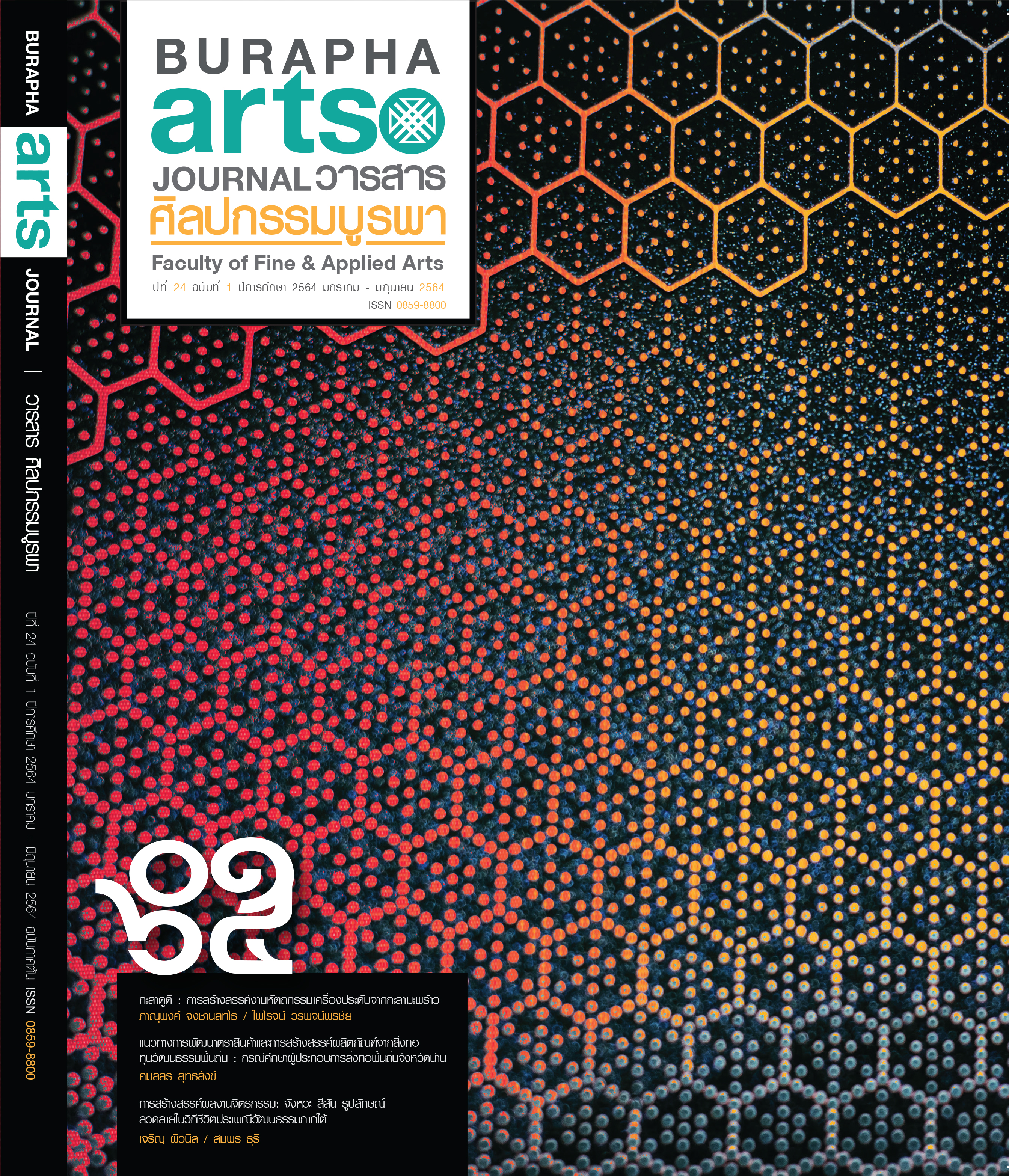เปรต : การสร้างสรรค์ประติมากรรมเครื่องปั้นดินเผาเพื่อติดตั้งภายในวัด
Main Article Content
บทคัดย่อ
The creation of ceramics sculptures to be installed inside the Thai temple. By experimenting with clay loam Huai -Thalaeng, Huai-Thalaeng Subdistrict, Huai -Thalaeng District Nakhon Ratchasima to be suitable for hand forming jade sculptures installed inside the
temple.Study of the texture of clay specimens was carried out and the ratios of the various
components based on the tri-axial theory were calculated using three raw materials:
Huai-Thalaeng clay, kaolin clay, grog .Test the physical properties of the soil by the rate of
the mixture and then take the sample to measure the length to find the shrinkage before
burning. Then, test specimens were burnt at 1,200 Degrees Celsius in the furnace, Oxidation Firing. The test specimens were then placed in a good recipe suitable for molding the
sculptures at the ratio of 6 to the Huai-Thalaeng clay 60 %, clay, kaolin clay 30 %, grog 10 %.
The design of the ghost sculpture. There are ideas to create a unique work of their
own, with the story of karmic retribution of suffering. According to the results. Expressive
Ghost Cotton tree, Ghost Testis big , Ghost Hanging head, Ghost Kill child, and Ghost
Mouth needle. Each category expresses a sense of action.
The research results in creative design take into account the clay properties of the
clay and the process of creating sculptural designs that have been made and are effective
for decorating the interior of the temple. In the form of imagination, the pottery sculptures
were painted in a fantasy style to match the present era. To express the story or image of
ghost. The suffering suffered as a result of the fate that was done in human life as a motive
to remind people to realize the evil good.
Article Details

อนุญาตภายใต้เงื่อนไข Creative Commons Attribution-NonCommercial-NoDerivatives 4.0 International License.
ต้นฉบับที่ได้รับการตีพิมพ์ในวารสารศิลปกรรมบูรพา (Burapha Arts Journal) คณะศิลปกรรมศาสตร์ มหาวิทยาลัยบูรพา ถือเป็นกรรมสิทธิ์ของมหาวิทยาลัยบูรพา ห้ามนำข้อความทั้งหมดหรือบางส่วนไปพิมพ์ซ้ำเว้นเสียแต่ว่าจะได้รับอนุญาตจากมหาวิทยาลัยฯ เป็นลายลักษณ์อักษร


